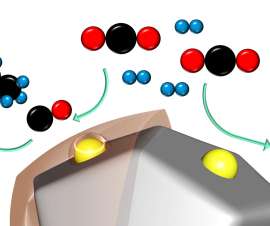Polymer-dipped carbon nanotube catalysts equal or outperform platinum catalysts in fuel cells; potential for significant cost reduction
Green Car Congress
MARCH 22, 2011
Illustration of charge transfer process and oxygen reduction reaction on PDDA-CNT [poly(diallyldimethylammonium chloride)-carbon nanotube]. The team led by Liming Dai, a professor of chemical engineering, is certain they can boost the power output and maintain the other advantages by matching the best nanotube layout and type of polymer.














































Let's personalize your content